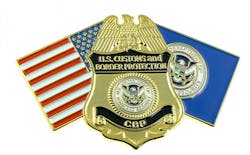How to Keep Slave Labor out of Your Global Supply Chain
While examining the risk factors of Tier 1 suppliers is important, companies must also be sure to review Tier 2 and Tier 3 suppliers in order to comply with the recent passage of the Trade Facilitation and Trade Enforcement Act of 2015.
The Trade Facilitation and Trade Enforcement Act of 2015, which was signed in February 24, 2016 and became effective March 10, 2016, significantly strengthens the law prohibiting imports of goods produced using forced or slave labor, including child labor and subjects the goods to U.S. customs seizure and forfeiture. The law allows any interested party, including competitors and public interest groups, to petition U.S. Customs and Border Protection to investigate whether an import was produced using forced or slave labor in another country.
This act compels companies to become more knowledgeable about their supply chains. “You have to start at square one,” Mickey North Rizza BraveSolution
One company that very publicly faced this issue was Nestlé when it admitted last year that it had discovered slave labor among its seafood supplies in Thailand.
Not as well-known is Ford’s discovery of charcoal produced in Brazil through slave labor. The charcoal made its way into its supply chain through the purchase of pig iron. Once discovered Ford began identifying all potential points of entry for pig iron into the supply chain.
As these abuses come to light companies would be wise to have their own people on the ground checking to make sure they are doing things properly, Joel Sutherland, managing director of the Supply Chain Management Institute at the University of San Diego told Ben Dipierty of the Wall Street Journal.
There are a number of tools available to help companies dig deeper into their supply chains. The Department of Labor has a list of source countries and where the products are coming from. Another tool is slaveryfootprint.org, a website launched in 2011 that helps consumers and businesses determine their connection to modern-day slavery around the world.
FRDM–which stands for Forced Labor Risk Determination and Mitigation, is another resource which works by allowing companies to compare their purchase data against a global database of more than 54,000 goods, services and commodities by using the international trade coding system for those items.
